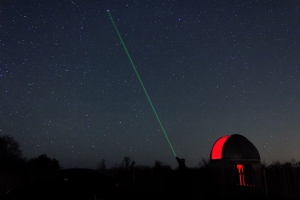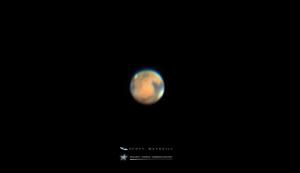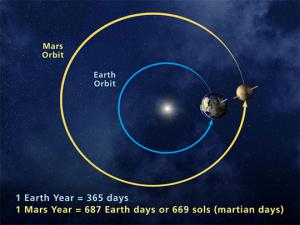
Stargazing Night
- Where:
- Frosty Drew Observatory
- When:
- Friday April 29, 2016 at 7:00 p.m. - 9:00 p.m.
- Cost:
- $1 Suggested Donation per Person
Tonight is Stargazing Night at Frosty Drew Observatory and again, forecasts are calling for a cloud attack. Though forecasting sources seem even more unsure about tonight than usual. At this point, we can expect mostly cloudy skies at sunset quickly becoming overcast for a few hours with the potential for a shower or two. If this sticks, it is rather unfortunate since the 45% waning crescent Moon does not rise until 2:00 a.m. and would have left us super dark skies to rock our astronomy prowess. Though a best-guess forecast, we do not expect telescopes to be open tonight, though we will still be on site monitoring the skies.
We plan to open the Observatory and Sky Theatre at 7:00 p.m. In the Sky Theatre we will host an open discussion on general astronomy while featuring a showcase of celestial objects photographed at Frosty Drew Observatory. In the Observatory, we will be on stand by and closely monitor sky conditions for viewing opportunities. Following us on Twitter(@FrostyDrewOBSY) or Facebook will get you updates from the Observatory. We will stay on site and open until 9:00 p.m. if skies don't clear. Otherwise, we will stay open until clouds or the Moon chase us out. In any event we will post a “Closing up” message when we decide to pack it in.
Overall, tonight's forecast is very uncertain, though quite a risk for those making the long drive. With telescopes on stand by, the likelihood of catching a view is low. If you're in the area and have a free Friday night tonight, stop in from 7:00 – 9:00 and catch up on some of the amazing things happening in astronomy and offer up some hope that the skies will clear. Clouds begone!
-------------------------------------------------------------------------
Weekly Happenings
Scott MacNeill
Have you noticed how bright Mars has been getting with every passing night? That is because Mars is closing in on opposition, which will happen on May 22, 2016, when Earth arrives at the point in its orbit when Mars is on the opposite side of Earth than the Sun. Opposition is usually an outer planet's closest point to the Earth during our year, though not necessarily for Mars, due to its rather eccentric orbit. Regardless, the viewing kicks into awesome mode about now and will continue to mesmerize well into mid-late June.
Mars, the fourth planet from the Sun, is visible in Earth's nighttime sky quite frequently, though not very impressive most of the time. To see all the fabulous features of Mars, you need to wait until the month around opposition, which comes around about once every two years. Unlike the other bright outer planets (Jupiter and Saturn) that have orbits around the Sun that take many Earth years, Mars has a much faster orbital period of about 687 days. Nearly twice the time it takes for Earth to orbit the Sun. As a result, one year after Mars is at opposition, Earth will be on the opposite side of the Sun than Mars, placing the red planet in our sky during the daytime. We have to wait another year for Mars to arrive back at opposition.
Mars' orbit is very eccentric, meaning that it is not a perfect circle. This applies to all the planetary orbits (Kepler's Laws of Planetary Motion), though comparably, Mars has the second most eccentric orbit in the Solar System, with Mercury taking the top slot. Compared to Earth, Mars' orbit is 5.58 times more eccentric. This results in Mars not being at its closest approach during opposition. In 2016, Mars will reach opposition on May 22nd, though it will be at its closest point to Earth on May 30th. On that date, Mars will be a mere 46,800,000 miles distant, about half the distance the Earth is from the Sun.
Mars is currently blazing brightly in the constellation Ophiuchus and will move into Scorpius over the next couple days. As Mars continues moving retrograde (moving East to West, the visibly opposite direction of a planet's orbit in our sky) over the next couple months it will move across the constellation Scorpius and into Libra by late May, where it will remain until early August, when it moves back into Scorpius after resuming prograde motion (moving West to East).
Though only appearing as an extremely bright, red star to the unaided eye; Mars will rock in a quality backyard telescope with views getting even better at a local observatory. Observing Mars will reveal the polar ice caps, Maria, and clouds along the edges of the equatorial region. Features can be easily identified by colors. The general color of Mars will appear pink with maria appearing dark grey / brown and the polar ice cap appearing as a white region at the top of Mars that appears to stand off the visible disk of Mars. Clouds will appear as bright regions on the eastern and western edges along the equator.
Frosty Drew Observatory will begin featuring Mars in our telescope once clouds cut us a break, with viewing times getting earlier each week. Make it a priority to get out and see Mars in the Frosty Drew telescope this May and June. The views are spectacular and you will have to wait until July 2018 for the next opposition. We also will attempt to capture images of Mars over the next month, which we will post on our Facebook and Twitter. So get your enthusiasm on and frequently set out under warm springtime starscapes to catch fabulous views of Mars, you will certainly be happy you did!
Save the Date: The Transit of Mercury at Frosty Drew Observatory all day Monday, May 9, 2016. Catch a view of Mercury crossing the visible disk of the Sun. This event only happens twice in a twenty year period. All we need is cloud free skies and we are set to rock! Read about the Transit of Mercury.
-Scott



